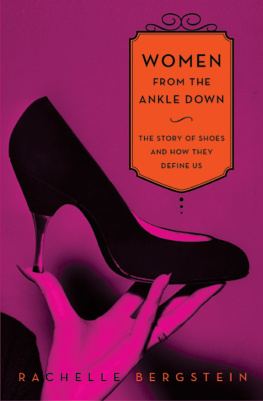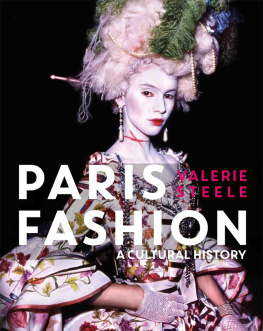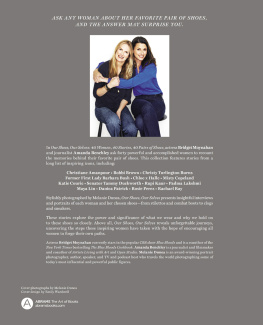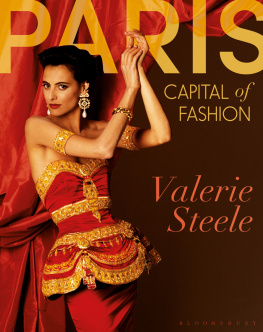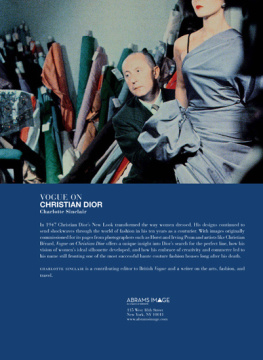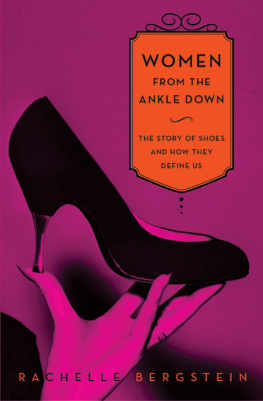
Women
from the
Ankle
Down
THE STORY OF SHOES
AND HOW THEY
DEFINE US
Rachelle Bergstein

For
MARCIA BERGSTEIN
and
PAULINE T. GARINO
The original style icons
In loving memory
Contents
They were the new Loeffler Randall snakeskin bootiesstunning with their black, white, and gray mottled texture; the curved toe; the sloping arch that led up to a sky-high medium-width heel. Pamela, in her own words, was stalking them. The moment they go on sale, she said on a drizzly Sunday morning, in between bites of eggs Benedict, theyre mine. She recalled the yellow gold hardware, reflected in subtle splashes of color on the snakeskin. Full price, theyre seven hundred and ninety-five dollars, Pamela continued. The gears were turning. Which is basically my rent. Buther face took on the impishness of a naughty childsometimes I can justify it, you know? Rent covers my apartment for only a month. But the Loeffler Randalls, she rhapsodized, taking another, satisfying bite, those Ill have forever .
Even as she was speaking, Pamela knew that her logic was by no means unassailable, but you had to appreciate how hard she was trying. Beautiful shoes seem to elicit this kind of creative thinking; a few months earlier, Kristena budding fashion and accessories designerwas sipping a two-dollar iced coffee that she could barely afford because work, for an artist living in New York City, is so erratic. Im thinking of investing in a pair of Christian Louboutins, she said, watching a stylish girl, decked out for spring, pass by the sidewalk caf. Maybe not new, but Ive been checking out barely worn pairs on eBay. It turns out, authentic Louboutins sold for a third of the retail price at online auction, giving Kristen access to pumps that would have otherwise lingered well beyond her budget. In truth, they were beyond her budget either way, but she was considering their value in other, nonmonetary terms. When I go out, I want people to see those red soles, she confessed. Im tired of not being taken seriously.
The idea of shoesas an investment, as social currencyisnt new and dates back to the theaters of ancient Greece, where characters of high rank wore elevated shoes; to the seventeenth-century courts of Louis XIV, where it was decreed that only men of high power could wear loafers with red, square heels; to the nineteenth-century Sioux, who allowed only chiefs to wear certain elaborate beading patterns on the soles of their soft leather moccasins. But what is relatively new is the incredible variety of socially acceptable shoes available to women today. Walking into a twenty-first-century shoe store is an exercise in decisiveness and restraint. Take in the wide array of materials available to footwear manufacturers and thus to modern-day customerssmooth matte and shiny patent leathers; pliable rubber; all sorts of artificial leather substitutes like plastic, polyurethane, polyester, and PVC; and on the opposite end of the spectrum, shoes made from natural fabrics like canvas, raffia, rope, and cork. As the music pumps and the salespeople hustle, a woman looking to buy new shoes can decide if she wants to pay top dollar for perfectly crafted specimens shipped straight from Italy, or if she needs to be budget conscious and stick to less sumptuous ones manufactured in China. Ultimately shell have to figure out if shes in the mood for classic high-heeled pumps, delicate strappy sandals, vertiginous platforms, modest ballet flats, practical oxfords and brogues, knee-high boots, high-ankle booties, wedges, Mary Janes, low-tech sneakers, or high-impact athletic shoes... not to mention the colors, cuts, and embellishments that make each pair feel exceptional. The possibilities are wonderful, dizzying, and its no wonder that buyers get caught up in the frenzy and leave the store sheepishly clutching more pairs than they initially intended. (Or, if theyre shopping online, the result is an engorged credit card bill and a friendlier relationship with the delivery guy.)
This diversity is the hallmark of the contemporary shoe scenewhich is all the more remarkable given that it wasnt until the mid-nineteenth century that custom shoemakers, who still dominated the footwear industry, decided to differentiate between the left and right foot in their patterns. At that time, only wealthy women had the pleasure of a diverse and sizable shoe collection. The rest invested in all-purpose pairs that could be passed down within families from child to growing child. This changed at the dawn of the twentieth century, when shoe factories with efficient assembly lines began to replace the old-fashioned cobbler. Factories could make shoes in a fraction of the time it took for a cobbler to lay out the leather, cut the pattern, and stitch it together by hand. Modernization was bad news for the gentle artisans who counted on making shoes for their livelihoods but good news for buyers, who could then afford cheaper factory-made footwearthe countrys first step toward fast fashion.
Today, the average woman often owns upward of ten, twenty, fifty pairs of shoes, some of which have very little practical use and languish in the back of the closet until just the right occasion arises. This is thanks, in part, not only to factories but also to industrial leaders like DuPont, which introduced low-cost artificial materials into the market in the early 1960s. On the heels of the cookie-cutter 1950s, youthful consumers were willing to experiment with style, and they tested out new, outrageous designs like the cuissarde a sexy thigh-high bootwith aplomb. Then, in the 1980s, another important development: sneaker companies, eager to promote their technologically innovative product, courted sports stars to appear as spokesmodels, and the age of the celebrity endorsement was born. Finally, progress came full circle when, during the late 1980s and early 1990s, the reign of the fairy-tale cobbler with his handmade, bespoke shoes returned. These glamorous, high-quality shoes could be purchased for a considerable price, and expressions of statusalways subtly enmeshed with the worlds of footwear and fashionbecame as conspicuous as the ruby red soles of a pair of Christian Louboutins.
These days, when women pick out their shoes, they find themselves, consciously or not, negotiating between the choices that have already been made for them by the fashion elitethe group of powerful designers, editors, and stylists who determine which shoes to show on the runways, and then to feature on the pages of popular magazinesand the prerogatives of personal style. As most women understand, lacing up a pair of Doc Martens or Converse Chuck Taylors sends a different message than shuffling through a restaurant in Crocs or strutting down the sidewalk in a pair of Jimmy Choos. Its up to each individual to decide who she wants to be in any given moment, and what information shed like her footwear to convey. Shoes have evolved to take on unique personalities and to communicate with the world in precise nonverbal language. If you ask a woman why she loves shoes shell tell you that theyre beautiful, that they make her feel good, that they have the ability to transform an outfit from simple jeans and a T-shirt into something showstopping and spectacular. These are just a handful of reasons why, at the height of this recent recession, footwear sales continued to rise while overall retail profits plummeted.
This moment in footwear is exciting, not just because the shoes themselves are inspired, accessible, and unprecedentedly celebrated but also because it hints at something bigger, and more profound, that took place during the twentieth century. The story of shoes in the past hundred-plus years is the story of women, told from the ankle down. It mirrors a trend that began with the well-heeled suffragettes in the 1910s, exploded in the 1960s with the womens liberation movement, and continued into the 1980s as women fought for high-level jobs and equal pay. It culminated in the 2000s when women embraced their personal agency. Pop culture introduced us to Carrie Bradshaw: a successful, financially independent single woman who refused to settle for Mr. Wrong and felt entitled to treat herself to expensive shoes. Women have fought forand undoubtedly have wongreater freedom and mobility. This narrative is crucial to understanding the evolution of contemporary footwear; as women demanded more options in their day-to-day lives, different kinds of shoes became available. As culture embraced and then rejected and then reinterpreted new, feminine strides, footwear styles emerged that reflected these advances and allowed women to express their various points of view. Pop-culture snapshots captured these shifts, and It Girlsthose aspirational paragons of beauty and styleoffer hints about what, at each historical moment, was being valued.
Next page
